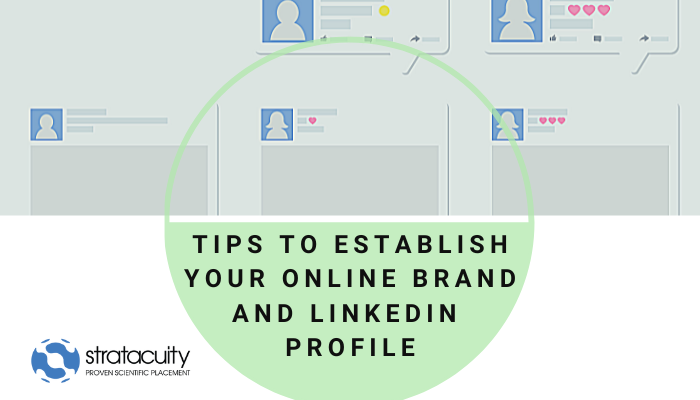Most employers and recruiters are doing a little online research on you at some point during the application, interview and selection process. There are typically 3 points when this research could be done:
1. Upon receiving your application, prior to even contacting you to schedule a conversation
2. Post conversation/interview #1, before determining whether to proceed with the next interview
3. At the end of the interview process, prior to extending an offer
So, not paying attention to your overall “online presence/reputation” is no longer an option! Everyone, despite being in a job search or not, needs to recognize the importance of being aware of what that presence looks like, how you could be perceived to current or future bosses, and take action to influence that presence and perception.
Where should I start?
Start with a quick and easy personal “Online Audit.” Who doesn’t like audits? Don’t worry, this one should be painless! Jump into a search engine, and type your full name and city. You can also add your primary job title and/or college if you recently graduated. Review the first page of results, clicking on any URLs that are actually about you. Don’t forget to skim through the Images section as well. We’ve had more than our fair share of candidates ruled out because of unprofessional Facebook pictures or other images. If you see anything troublesome, such as a picture that might need to be updated or a profile that’s extremely outdated or riddled with misspellings, add those ‘Action Items’ to an ‘ORM Checklist’ (Online Reputation Management).
Deep Dive Into Your Social Media Platforms
Once your precursory online search is done, write a list of all the platforms you’re on, and then do brief quality assurance on each one. Check out those privacy settings and update accordingly for the sites you reserve for personal use (i.e. typically Facebook, Instagram and/or Twitter). At this point, if you’re not sure what social platforms you use for what, spend 3-5 minutes to think through that. For example, I use LinkedIn, MeetUp and Twitter for professional use, and Facebook and Instagram for personal. However, since my Instagram is purely for capturing travel/exploration, wildlife/nature and adventure bucket list related pictures, I wouldn’t choose to adjust those privacy settings, whereas I would do some quick review and adjustments to anything on my Facebook profile that’s public-facing/visible.
Create a Branding Plan
Once you’ve updated privacy settings on channels you don’t use publicly, and made small tweaks on any of the public-facing pictures/content, it’s time to develop a ‘Professional Branding Plan’ and execute for the main professional channels you use and want visible to those searching eyes!
LinkedIn – What should I be concerned with when it comes to my profile?
LinkedIn continues to be the main professional social network, and it would be extremely surprising to meet a Recruiter or internal Talent Acquisition Specialist who wasn’t on the network, and actively using the network to both find and screen candidates! Therefore, you should be spending at least 15-30 minutes doing a thorough LI profile review and updating.
Top 6 recommendations for LinkedIn and other professional social channels you use:
1. Quality Headshot – do you have a professional headshot photo? Ensure that photo is uploaded via all sites/platforms you’re using professionally!
2. Tag Line – most platforms, such as LinkedIn, have a quick summary section next to your picture. Think through a consistent tag line that communicates your key skill set, certifications, and other aspects that might be key for your readers to know. For example, if you’re a tenured Researcher with PCR skills, your tag line could be “Sr. Researcher – PCR specialist.” As a second example, if you’re a Clinical Medical Writer specializing in the therapeutic area of Oncology, your tagline could read “Medical Writer – Phase II/III, Oncology.”
3. References – for any platforms which allow for endorsements or recommendations, get them!
4. Key Technologies – what are the top 3-5+ techniques, instrumentation, methodologies, etc. you use? Ensure those are at the top of each profile.
5. Customize your profile URL – in the Settings section of your profile, edit your URL so it isn’t a never-ending line of numbers and letters. It’s a good practice to have your full name followed by last name, but you can also have some fun with it! For example, if you’re a HPLC Operator and Troubleshooter, you could adjust URL to be linkedin.com/in/JohnSmithHPLCWhiz.
6. Community/Group Involvement – what are the key groups you’re in? Primary technologies you use? Don’t forget to add that involvement, sharing what capacity you contribute if you’re a contributor vs. member. Make sure you get connected via the social channels for any groups you’re active with. For example, if you’re an Engineer who’s part of your local SME chapter, follow them via Twitter if they have a handle and join their LinkedIn and/or MeetUp Groups.
Optimize to Increase Traffic
If you’re actively in the job market, or just want to draw more attention to your profile in general, there are several organic (i.e. free) tactics you can utilize to optimize your profile so it ranks higher when people use key words to search for folks like you!
Source: Apex Systems

